Vermeer's Delft
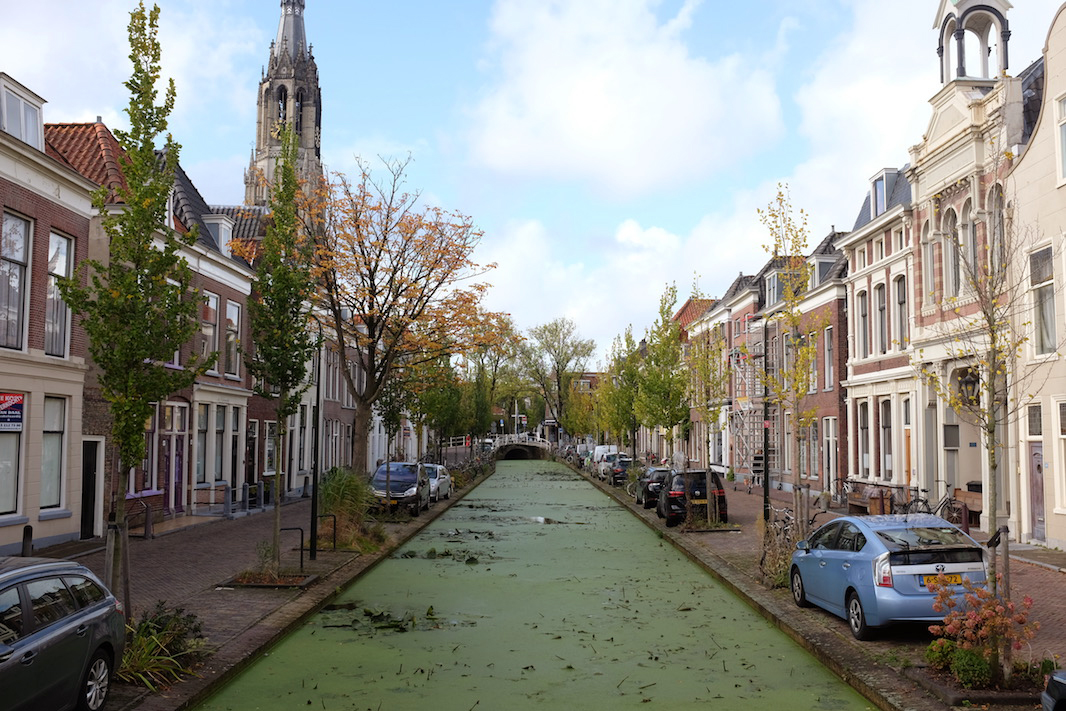
I expanded my #vermeergoals and visited Delft in October 2018—343 years after Vermeer lived there!
Vermeer was born and raised in Delft. There's relatively little information on Vermeer's life in general but it seems he spent the vast majority of it in Delft, with a few possible trips to other places in the Netherlands, like Amsterdam.
I visited and have noted here some of the places scholars have identified as a part of Vermeer's life—though, as you'll see there's often two best guesses for a location.
This by no means is an exhaustive resource, for that you should most definitely visit Essential Vermeer where most of my information comes from.
My personal notes on the trip are on the Visits page.
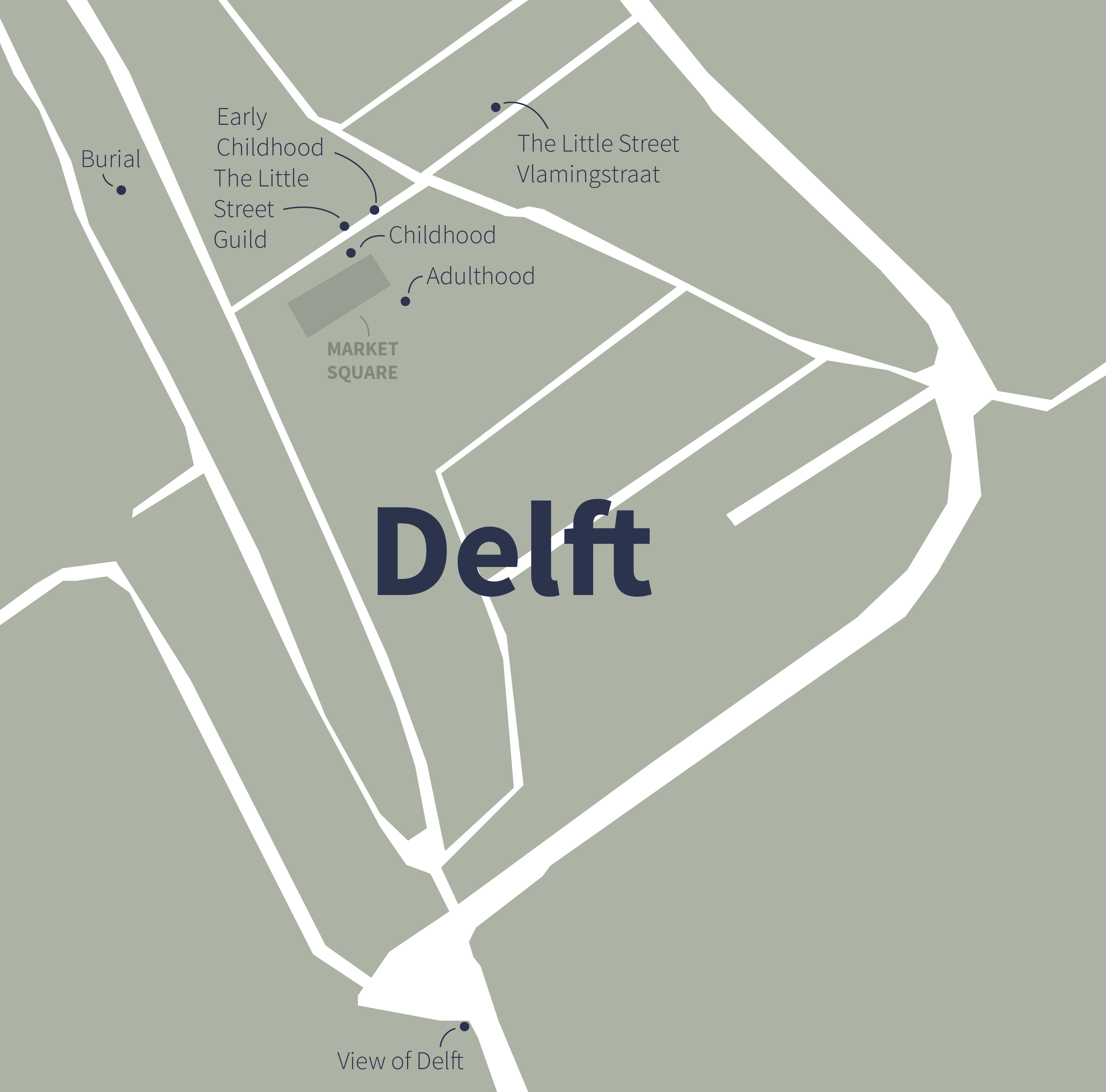
Sections
Homes
Birth, childhood, adulthood
Vermeer lived in three locations, that we know of, all within a short distance of each other and nearby the market square in Delft.
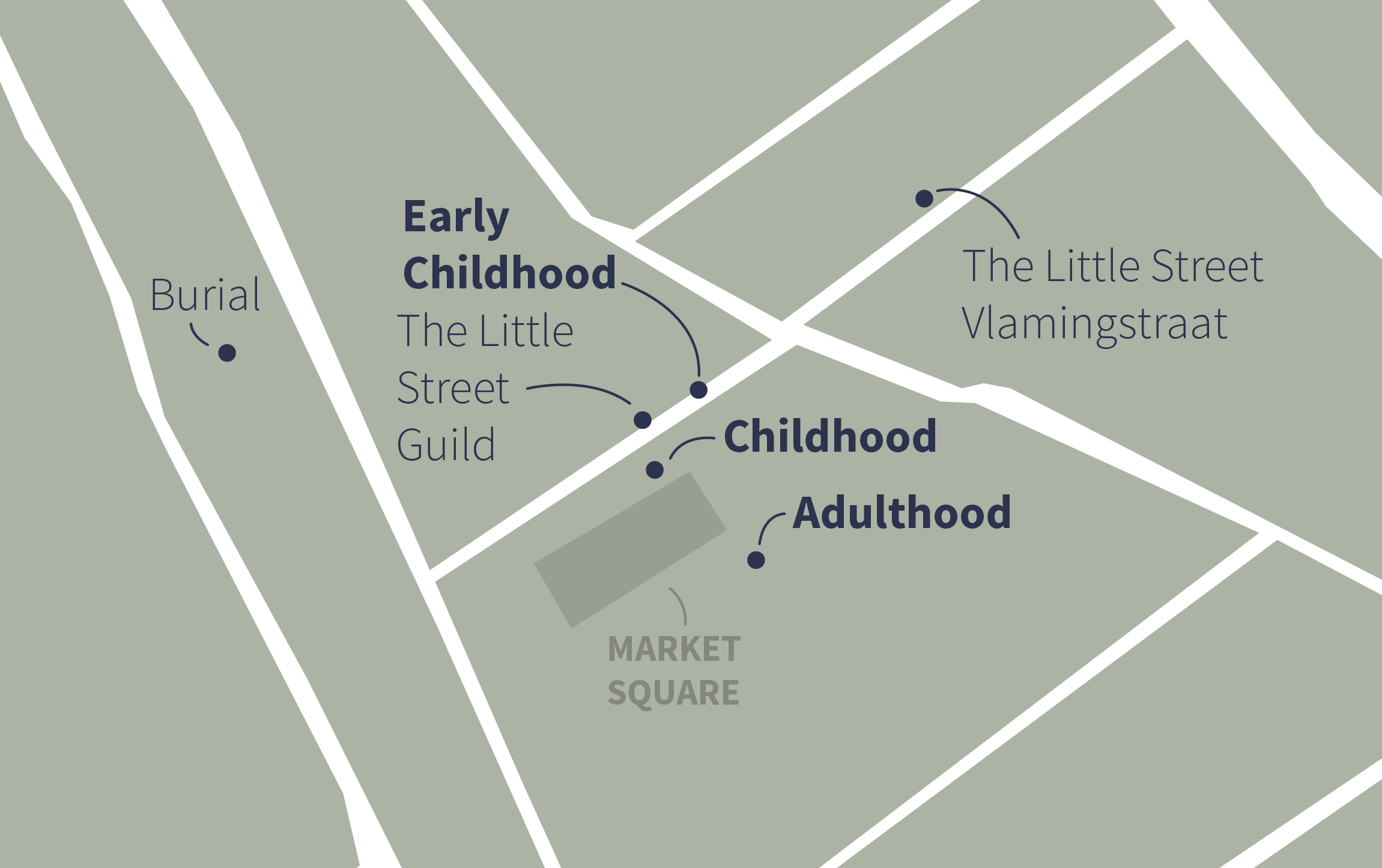
Early Childhood Home
Vermeer was born in and lived as a young child at the inn his parents ran. The location still exists and remains an Inn, Herberg de Vliegende Vos. It is a few doors down from what is today the Vermeer Center, but what was once the artists' guild that Vermeer belonged to, Guild of St. Luke.
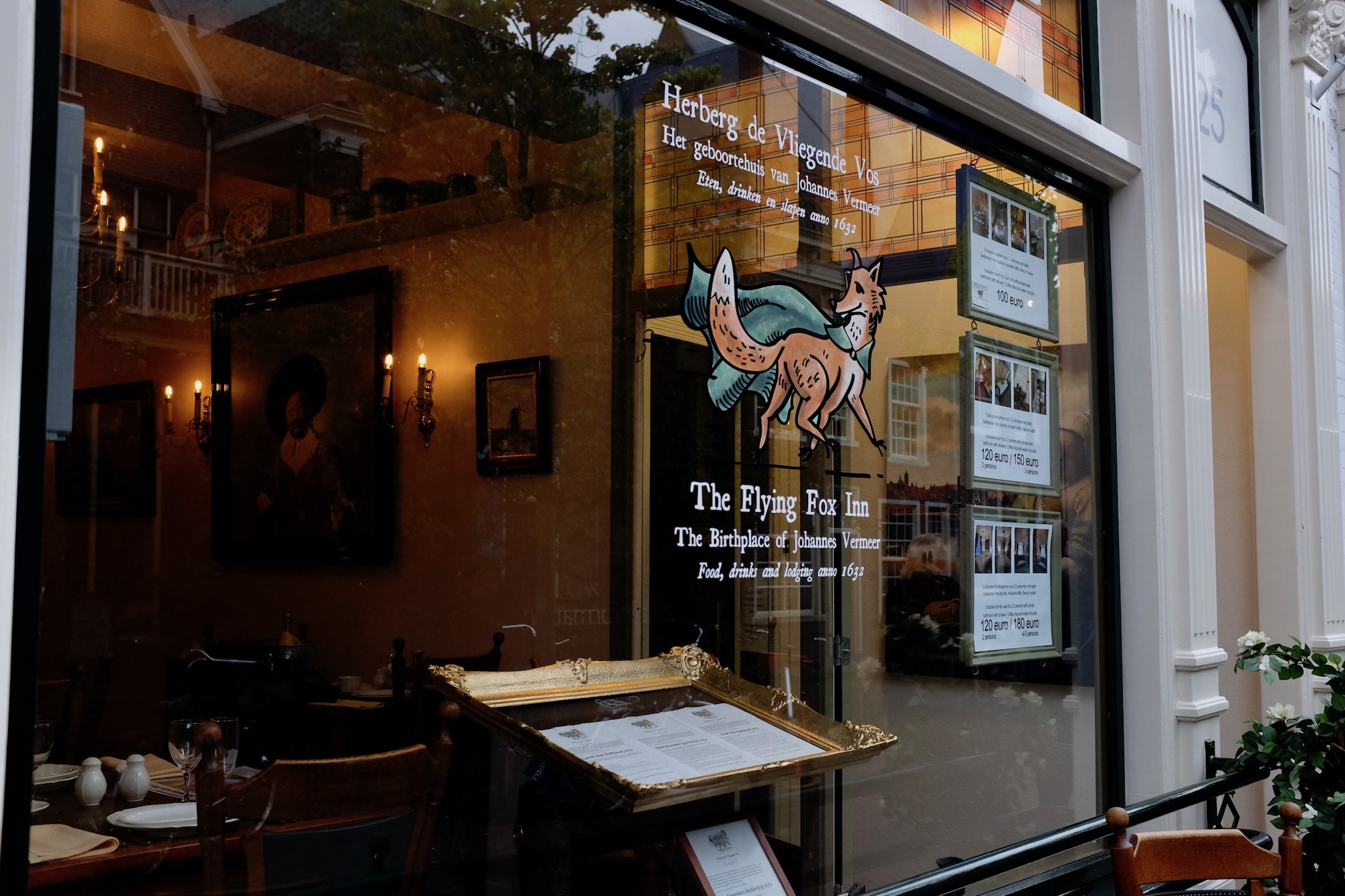
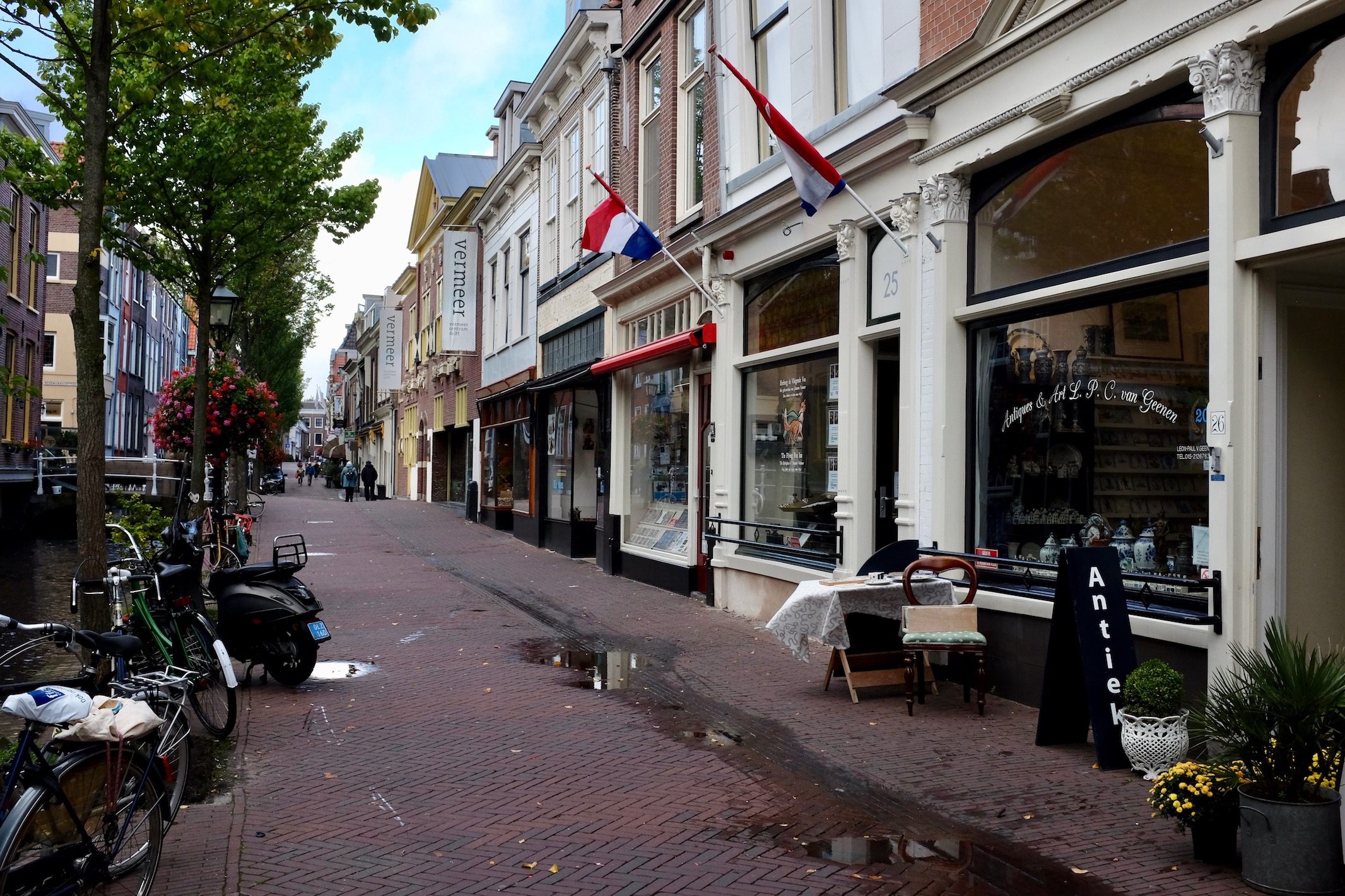 The storefront window of the inn today and the street with neighborhing buildings.
The storefront window of the inn today and the street with neighborhing buildings.
Childhood Home
When he was a child, Vermeer's family moved just across the canal to another inn, named Mechelen, where his father also was an art dealer. The building no longer exists; it was torn down in order to make the street across the canal wider for fire safety. There is, however, a plaque on the buliding which would have been next door, though the plaque gives incorrect details.
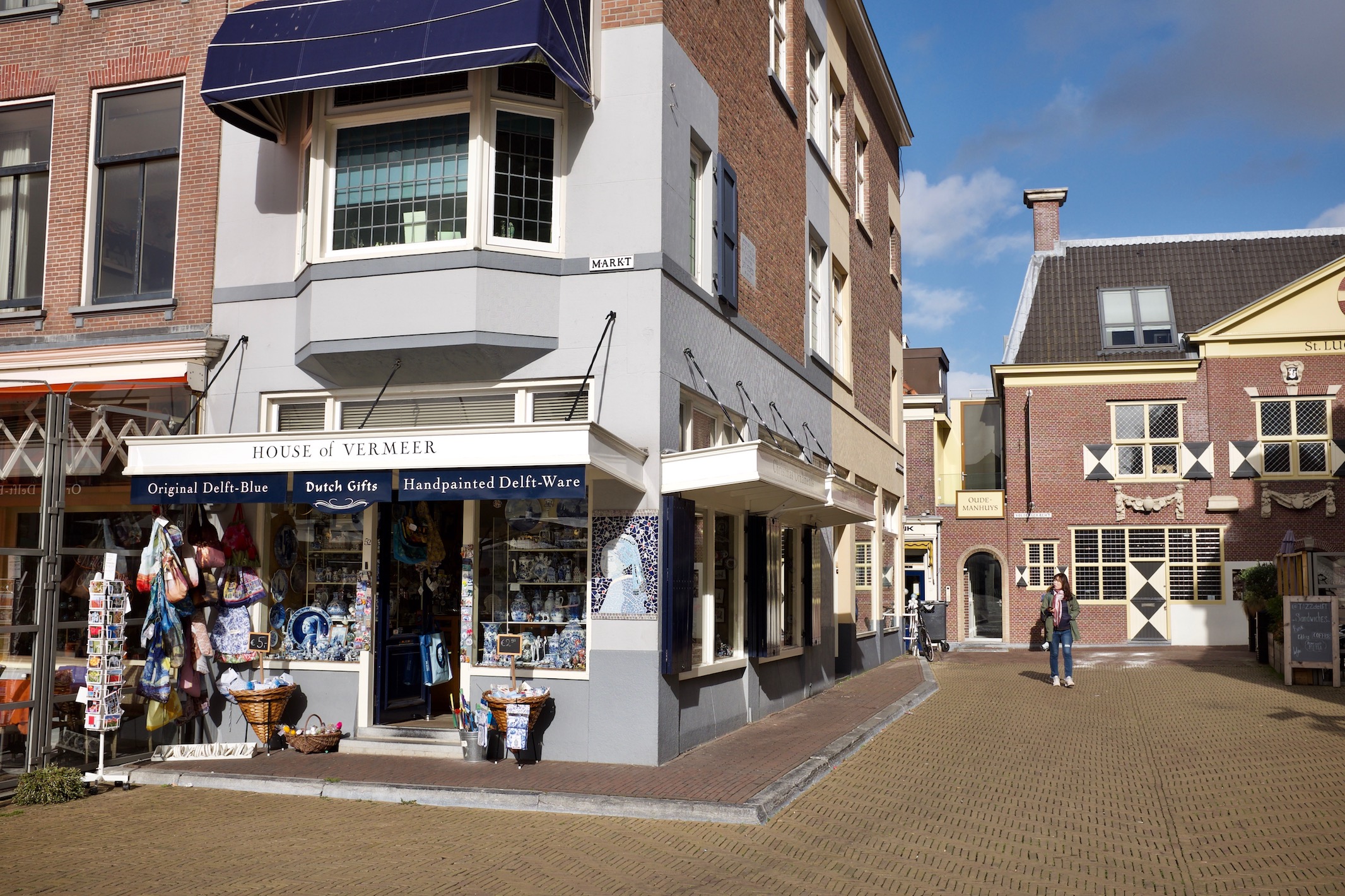
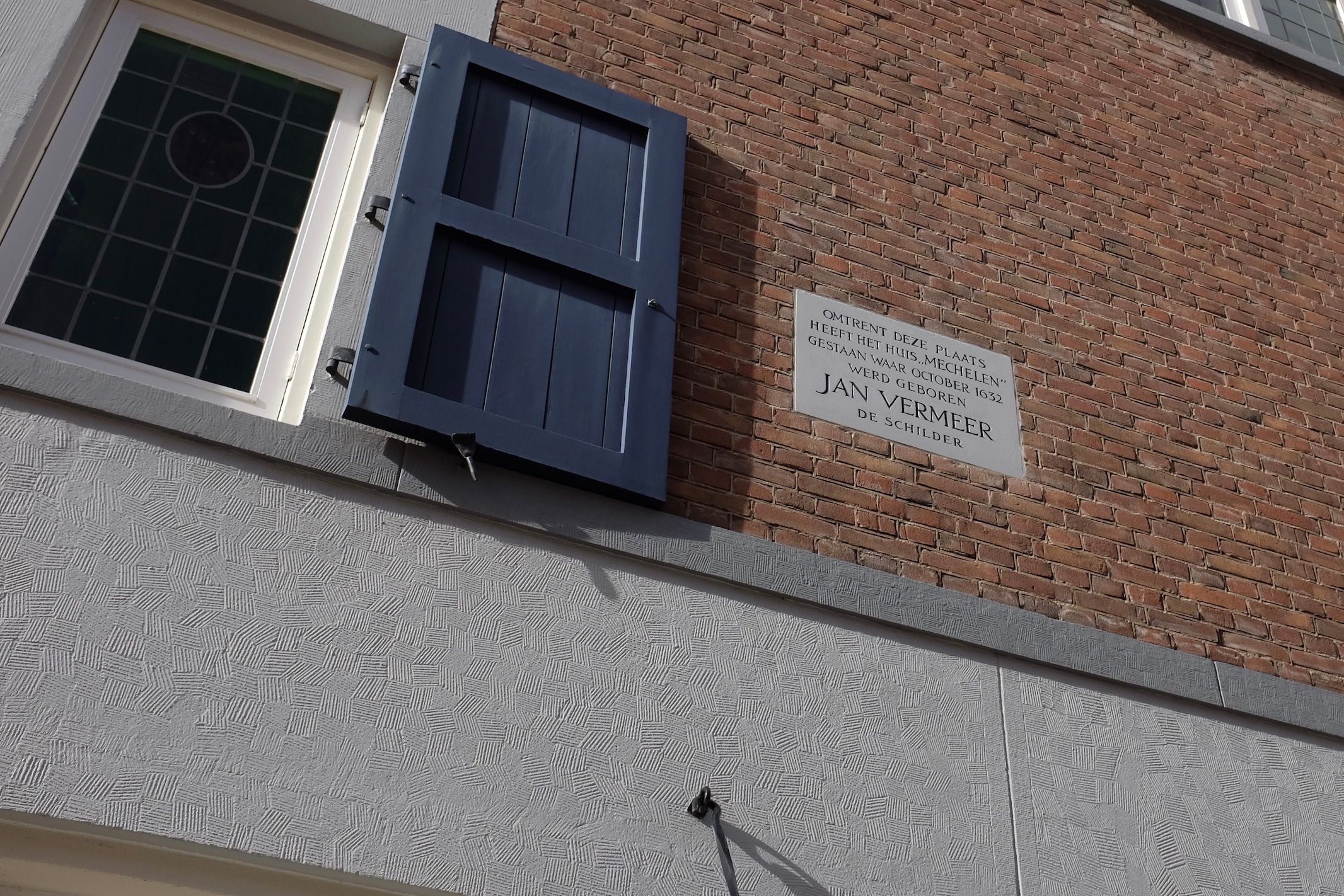 The space, now a wider street, where the Mechelen once stood and Vermeer lived as a child until he married.
The space, now a wider street, where the Mechelen once stood and Vermeer lived as a child until he married.
Adult Home
After Vermeer married he moved a few minutes walk further from the market square, into the home of his Mother-in-law. He remained here for the rest of his life. There are two theories as to where that home was located.
One theory, which is documented at the location, is that the parcel of land where Vermeer lived with his wife, 11 children and Mother-in-law, is now occupied by the Maria van Jesse Church. There is a really throrough study of the neighborhood in Vermeer's time.
Another theory, detailed in a paper, is that the house is actually the one just next to the present-day church. It seems the thing we can be most certain about is the alleyway between the two locations.
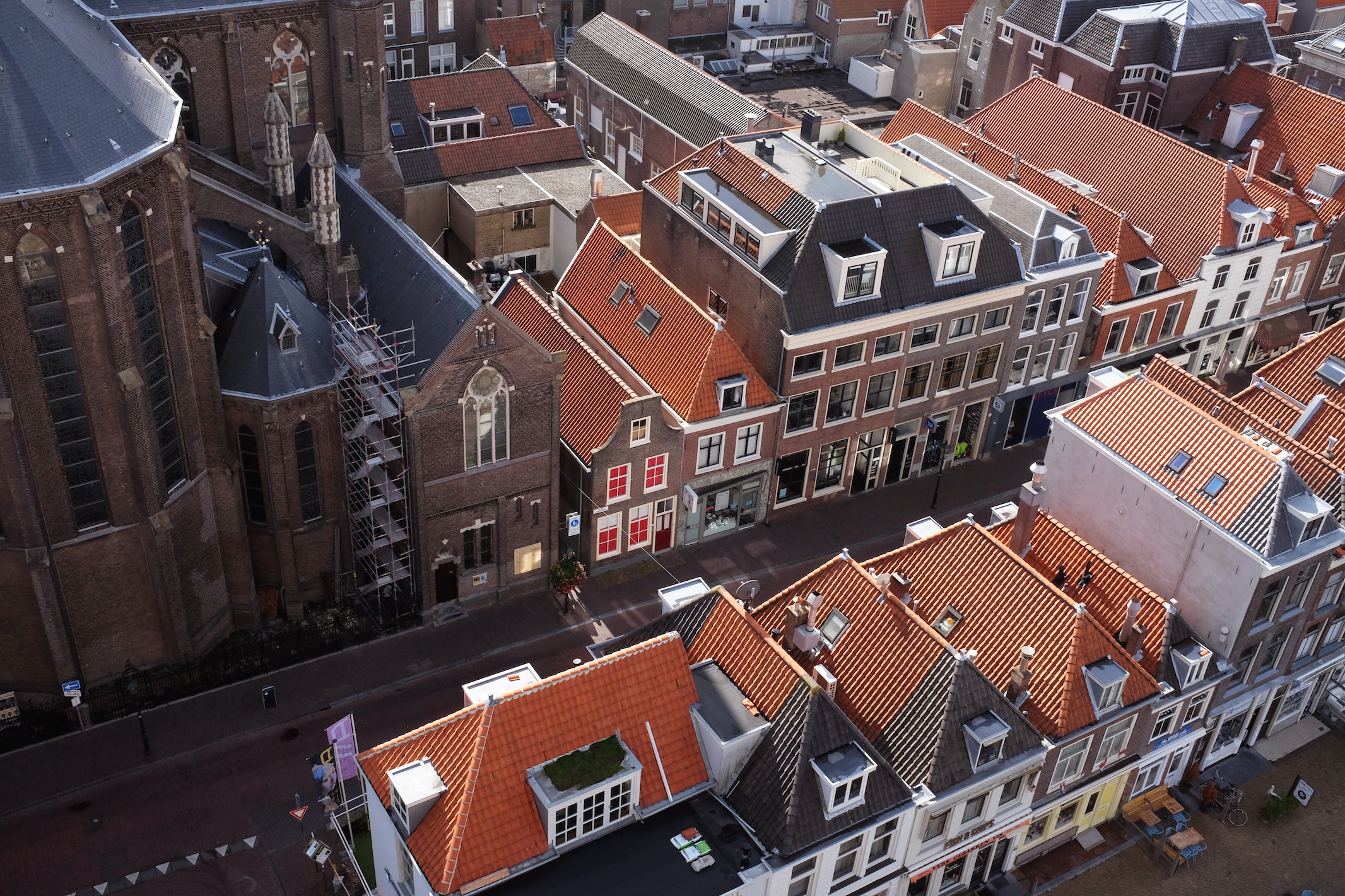
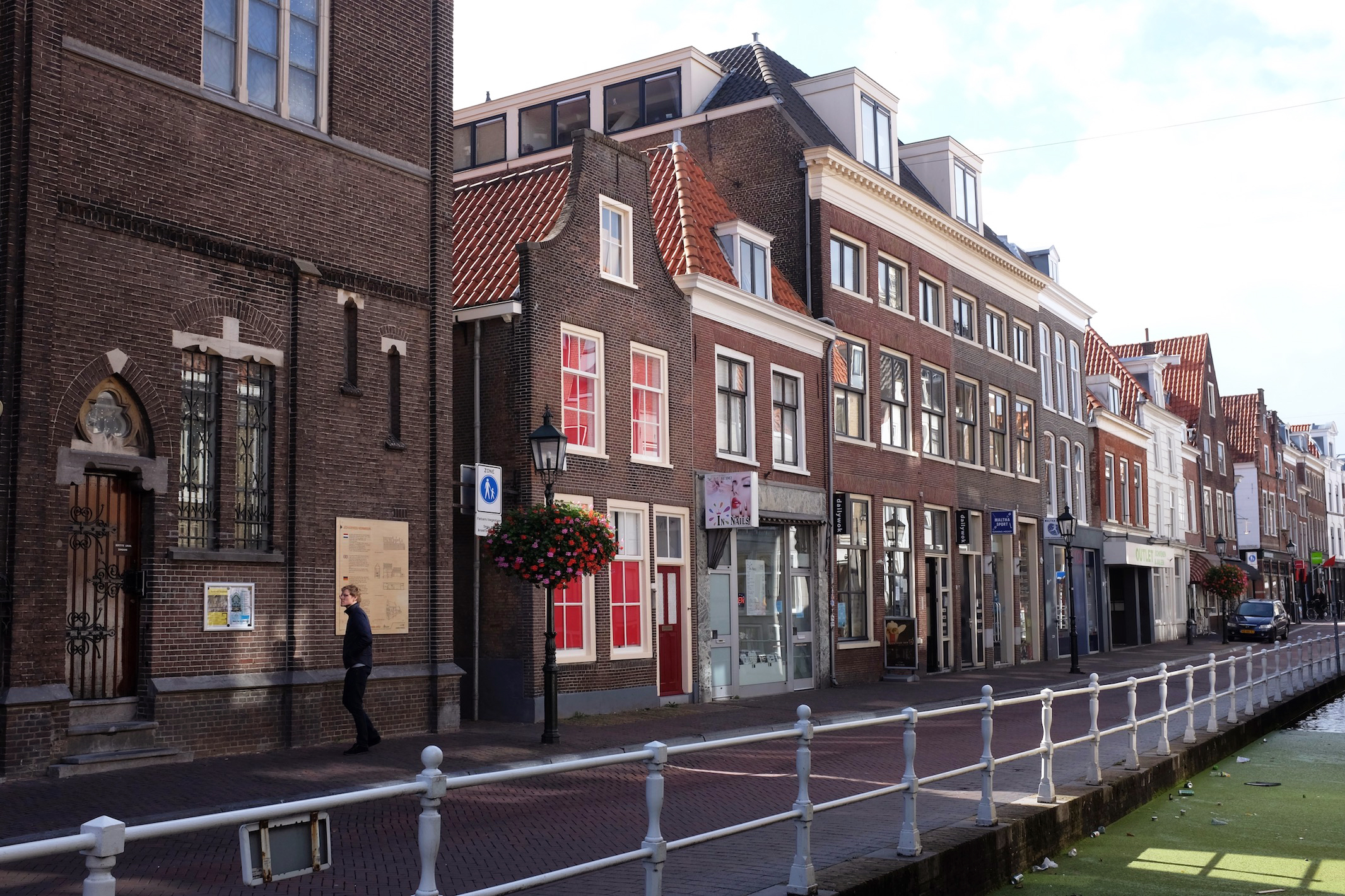 View of the two possible locations of Vermeer's adult home from atop the New Church in the market square and a view from the street where the two buildings share an alleyway. The plaque on the church can be seen in the second photo.
View of the two possible locations of Vermeer's adult home from atop the New Church in the market square and a view from the street where the two buildings share an alleyway. The plaque on the church can be seen in the second photo.
Painting Views
View of Delft, Little Street
There are two (known) outdoor scenes of Delft painted by Vermeer. One is easy to locate and the other, Little Street, has a disputed location, and I've included both possibilities here.
View of Delft
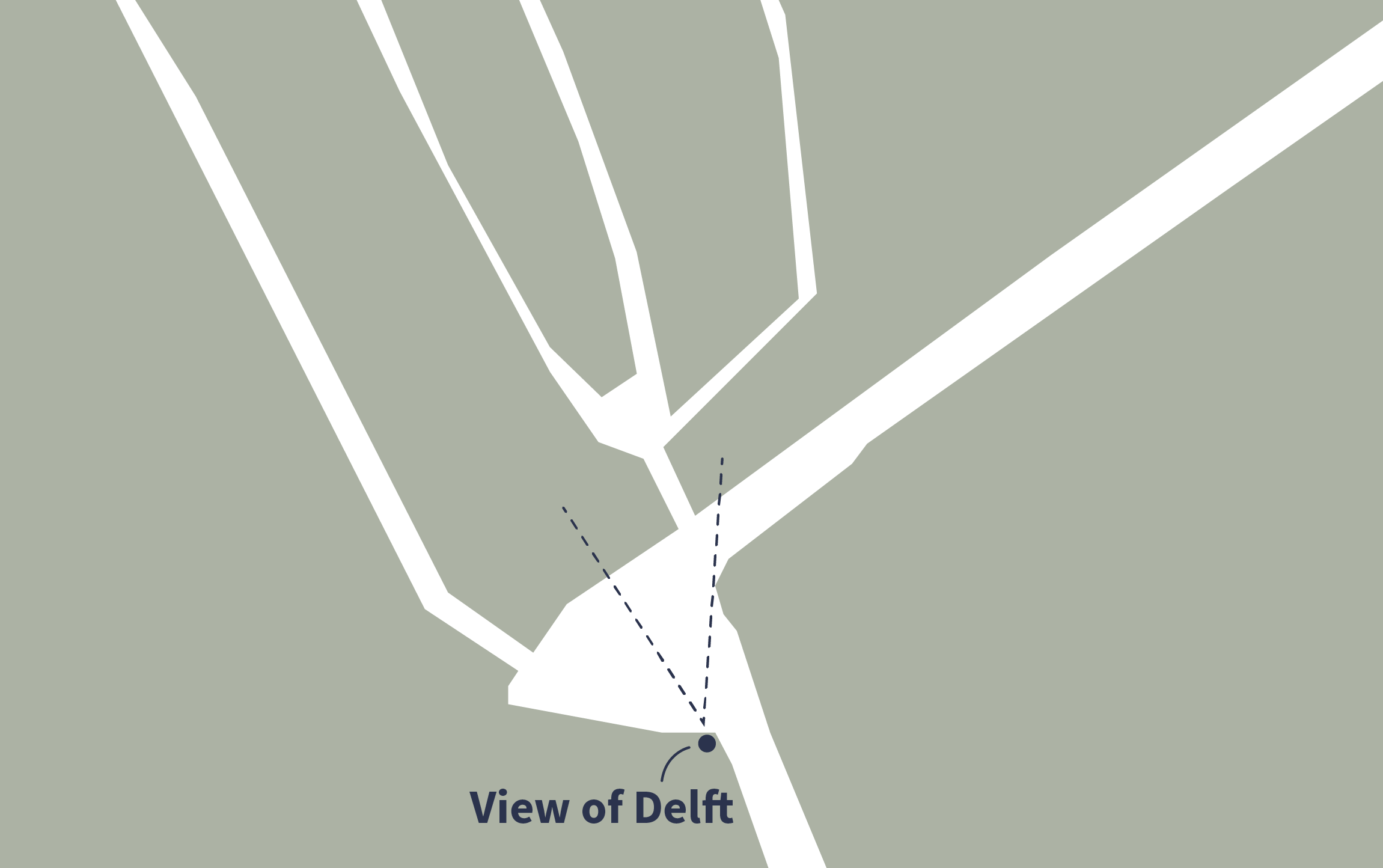
The Painting, View of Delft, was painted from the southwest entry into the city. A lot has changed but the steeple of the New Church can be seen in both his mid-17th century view and ours today.
This painting is in the permanent collection of the Maurtishuis in The Hague. Notes from my visit.
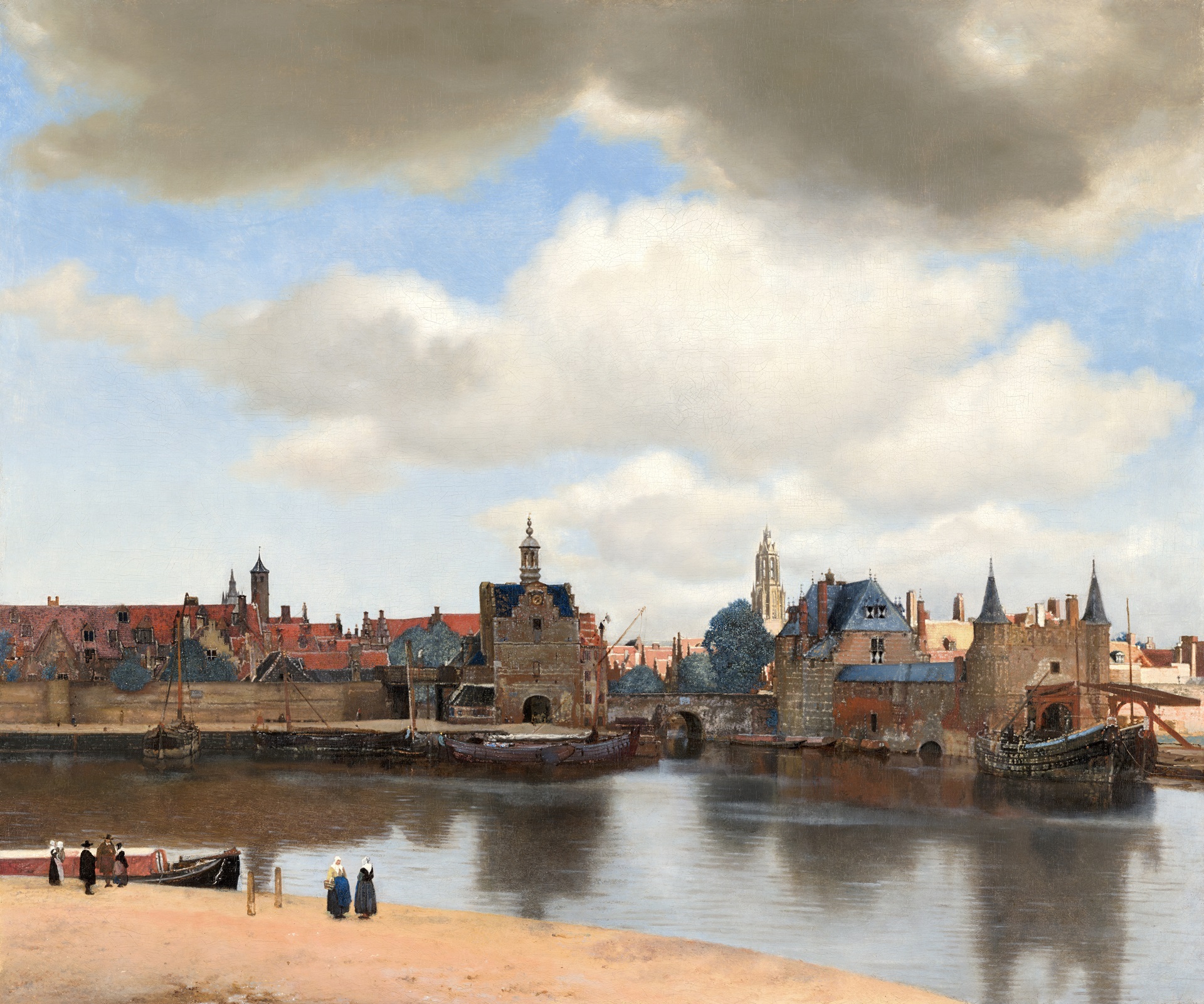
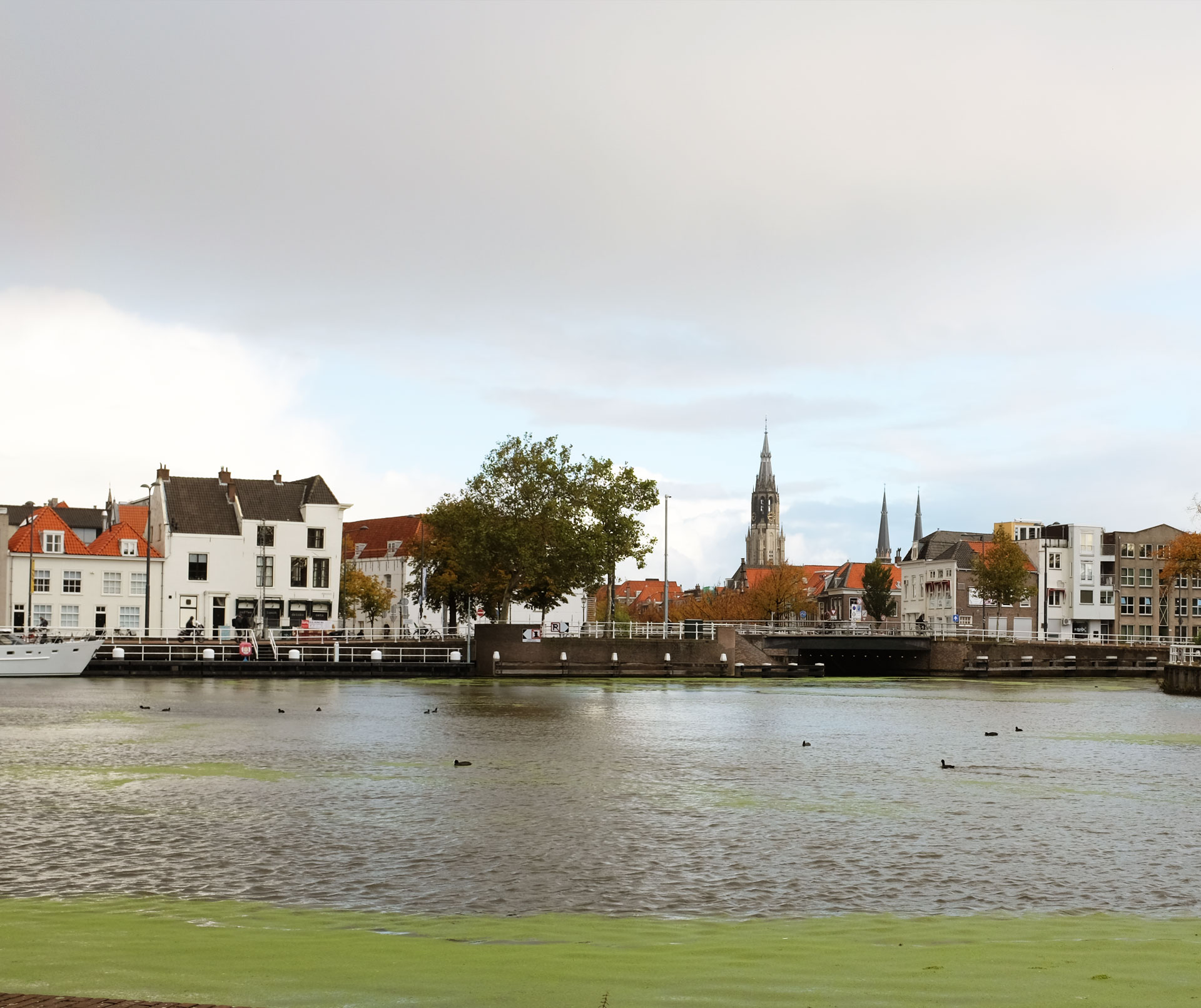 The painting, View of Delft, and the view from the same location today.
The painting, View of Delft, and the view from the same location today.
Personal note—look at how we both got those grey clouds! When I visited it was early in the morning, lots of people biking to work and to the Delft Technical University, and it had just started to sprinkle.
The Little Street
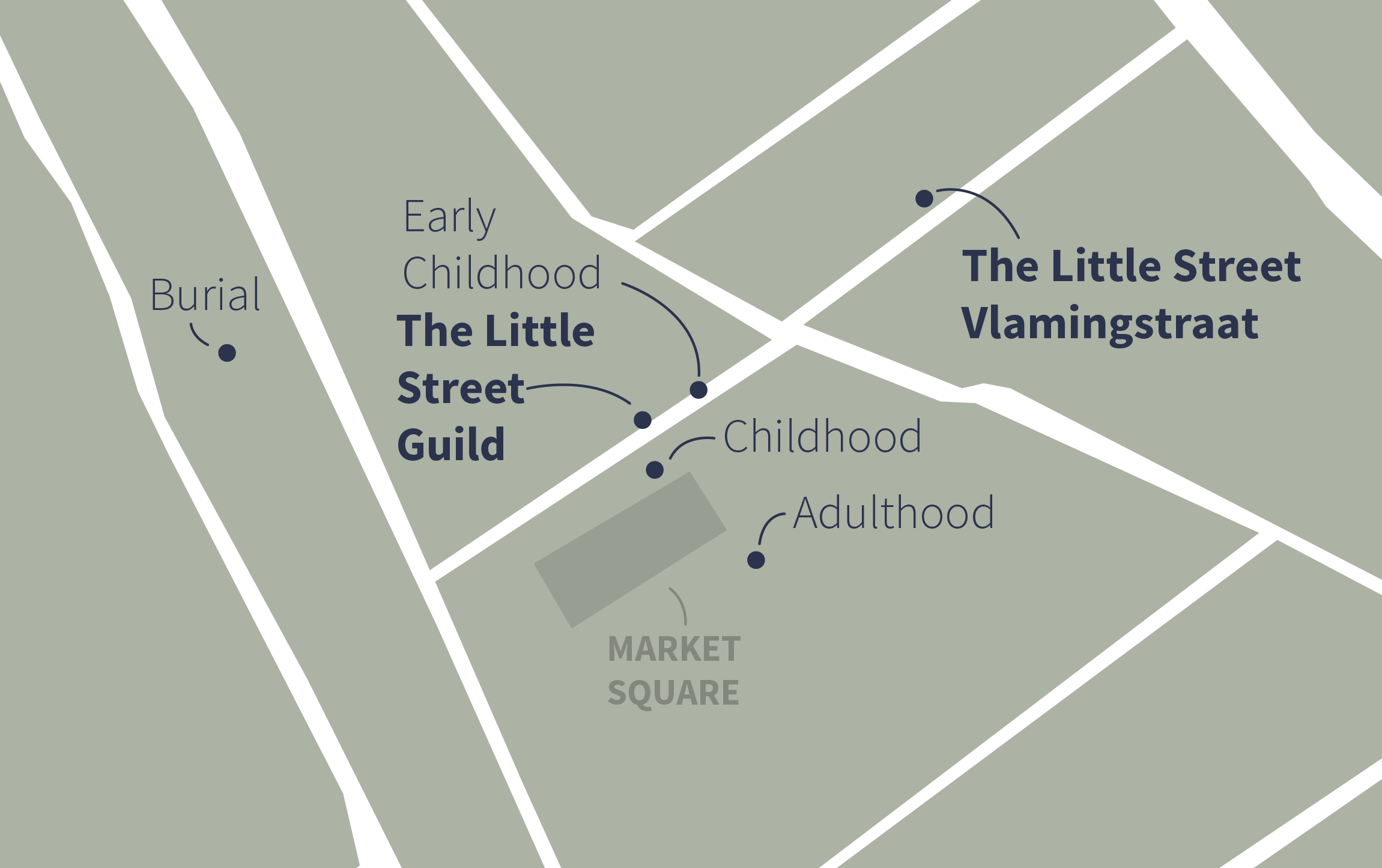
The painting, Little Street, gives a look into domestic life from the outside. We see two of Delft's small alleys between houses and into the doorway of a house. There are two possible locations for where this scene was painted by Vermeer.
One location, documented in Delft, is along Vlamingstraat. Today there is only one alley but in Vermeer's time there were two. You can read about this location from the Rijksmuseum.
The other possible location is where the Vermeer Center stands today, which once was the St. Luke's Guild for artisits that Vermeer belonged to. This view would have been possible to see from the back of the Mechelen inn owned by Vermeer's family, which is now open space (see Homes section above). You can read the case for this location.
The Little Street painting is in the permanent collection of Rijksmuseum in Amsterdam. Notes on my visit.
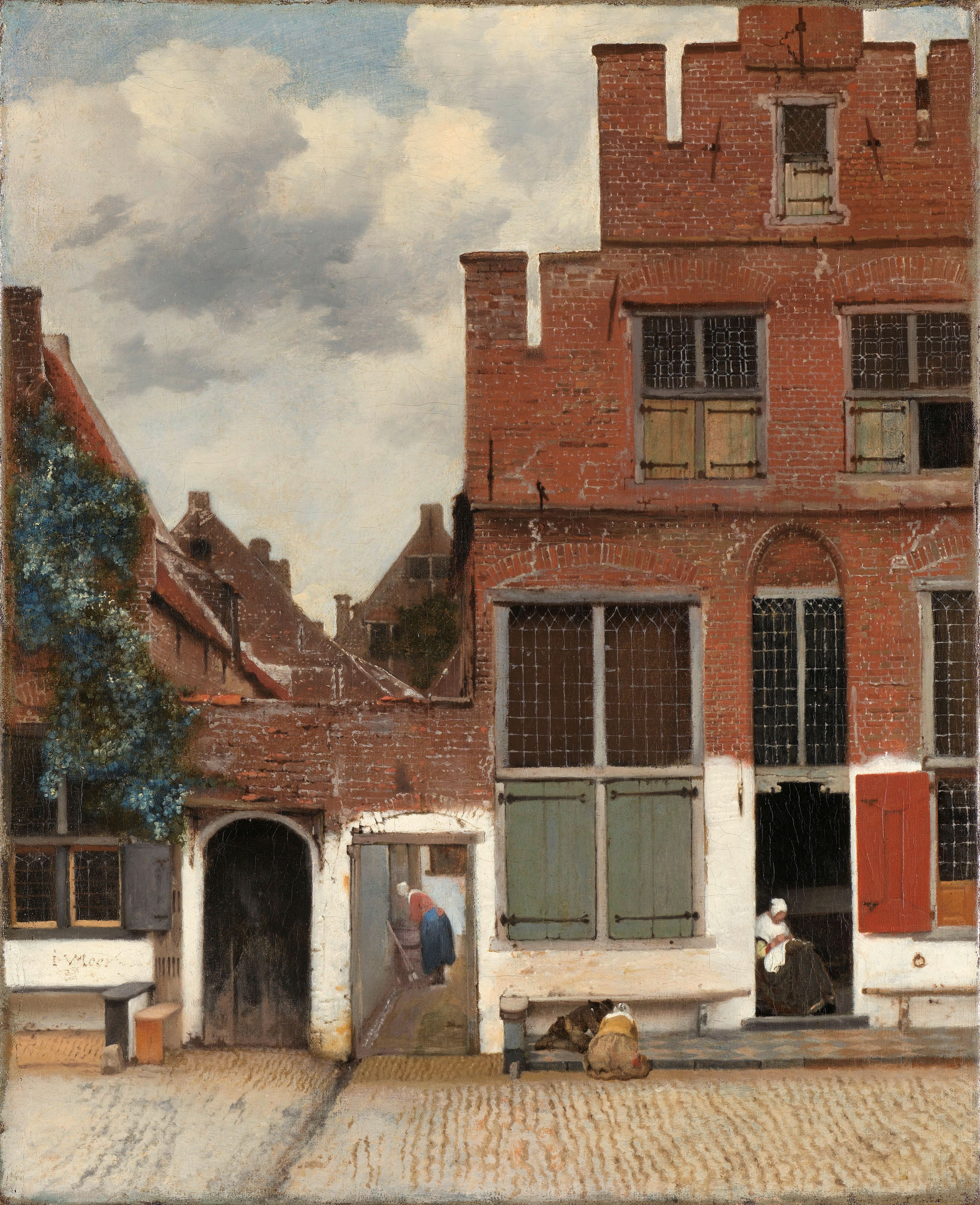
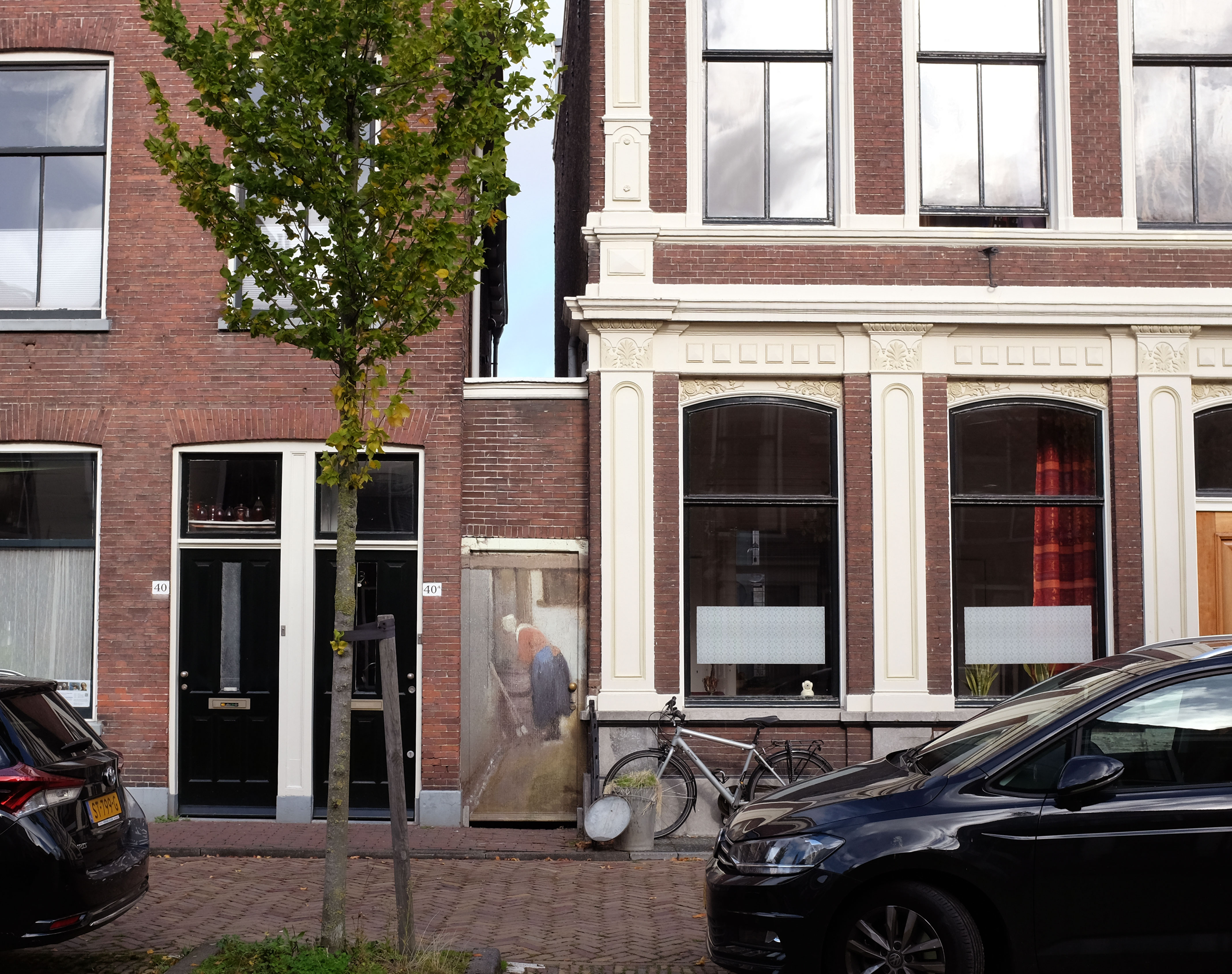
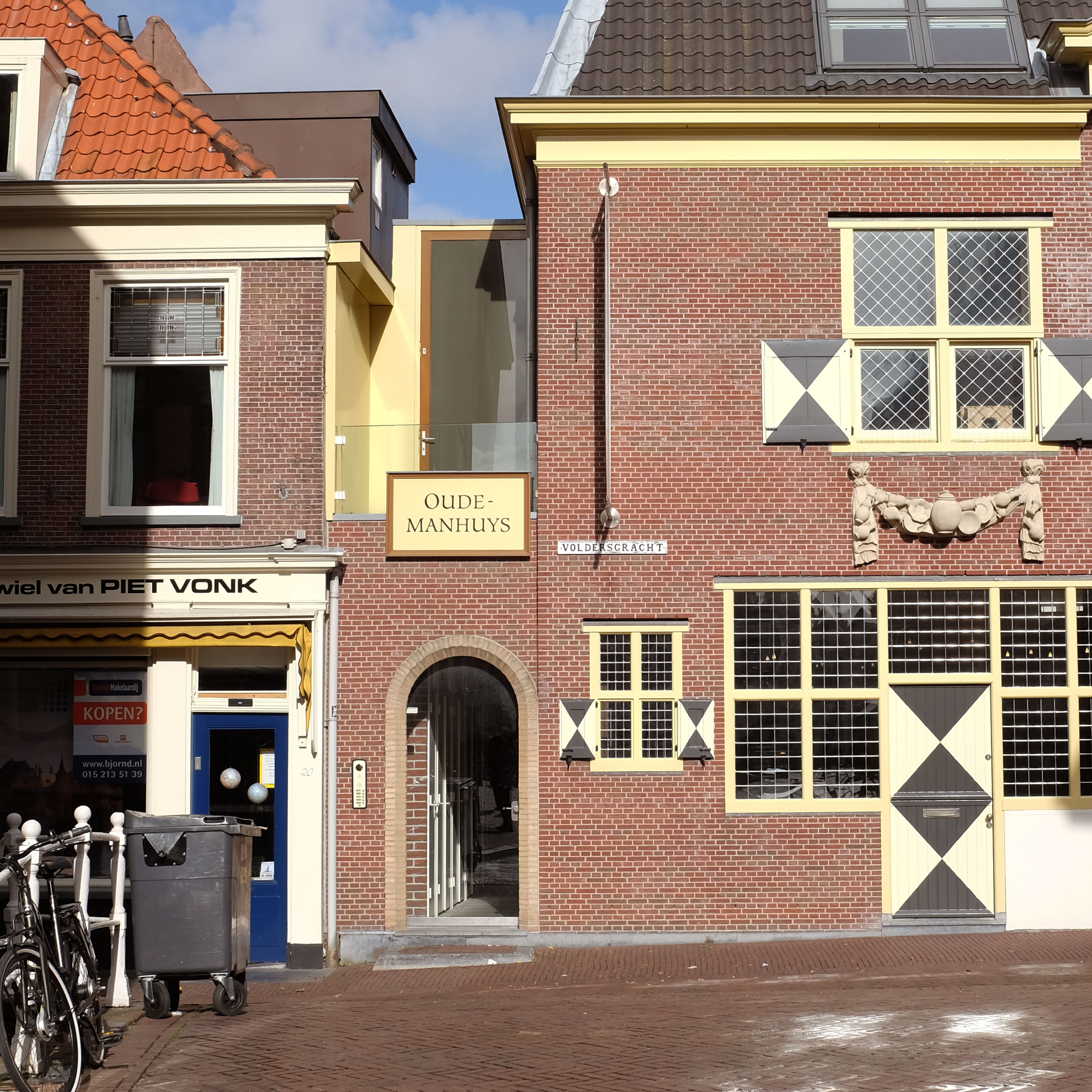 The Little Street Painting and the two possible views it captures, the second being of the location of the artists' guild Vermeer belonged to, St. Luke's.
The Little Street Painting and the two possible views it captures, the second being of the location of the artists' guild Vermeer belonged to, St. Luke's.
Burial
Oude Kerk
When Vermeer died in 1675 he was buried at the Oude Kerk (Old Church). It's (of course) not clear exactly where he was burried within the church and there are two grave markers. We do know that the plot was purchased earlier by his Mother-in-law and two of his children that passed away very young are also burried here.
Oude Kerk & Grave Markers
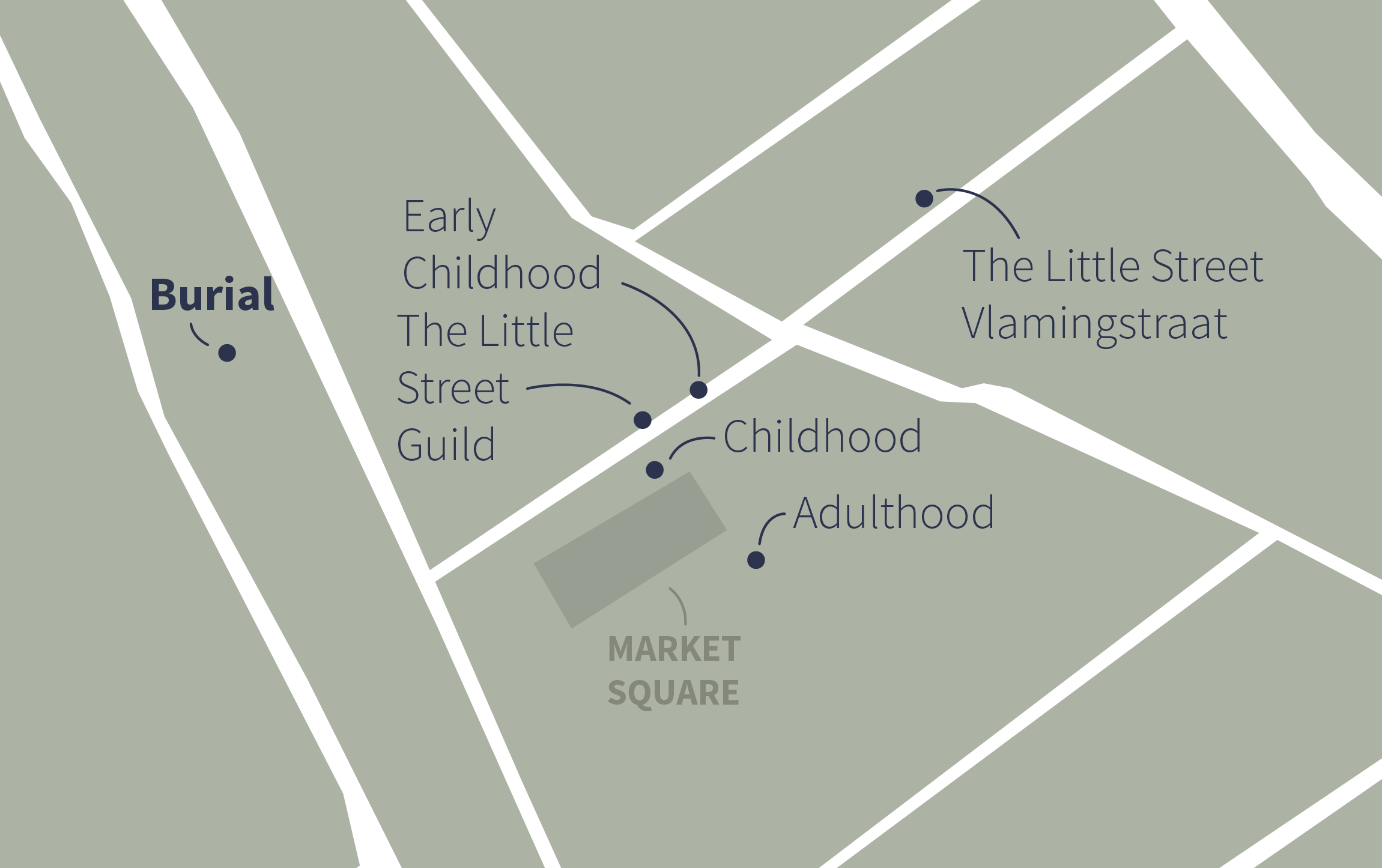

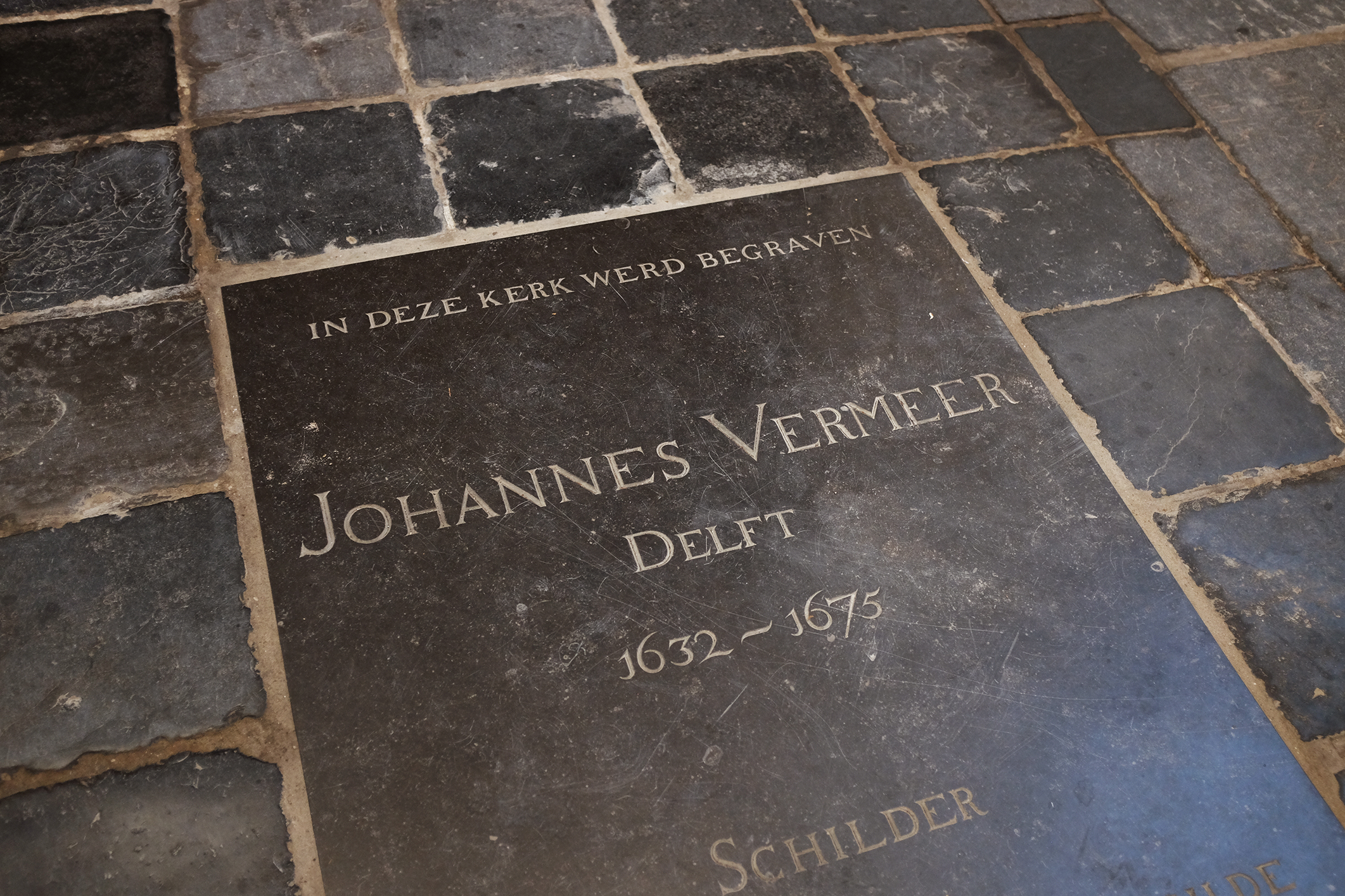
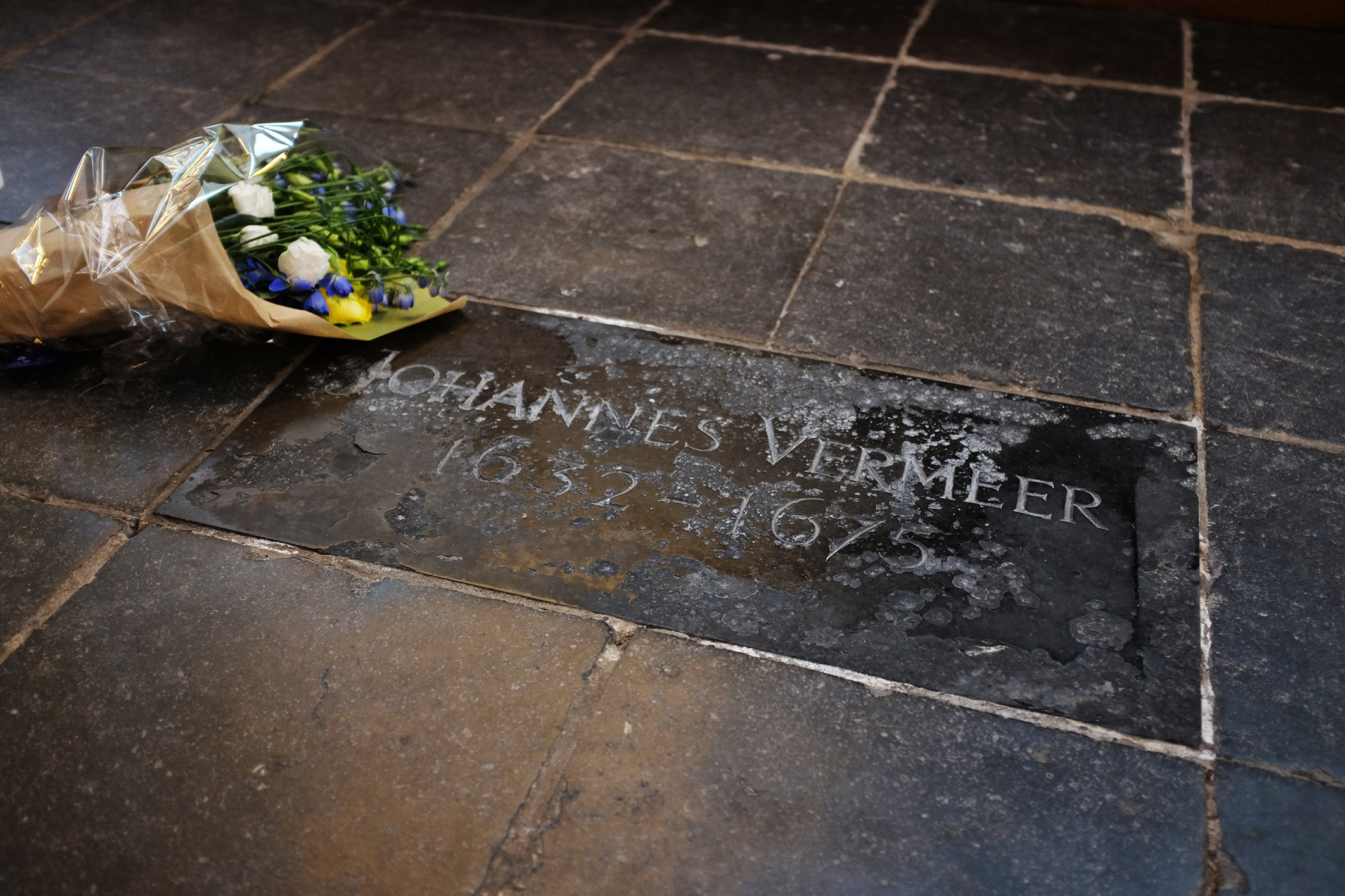 The exterior the Old Church and the two grave markers for Vermeer inside. The larger grave marker is the newest of the two.
The exterior the Old Church and the two grave markers for Vermeer inside. The larger grave marker is the newest of the two.
Map
Below is a Google Map with the Vermeer-related locations described here saved. Use if you visit Delft!